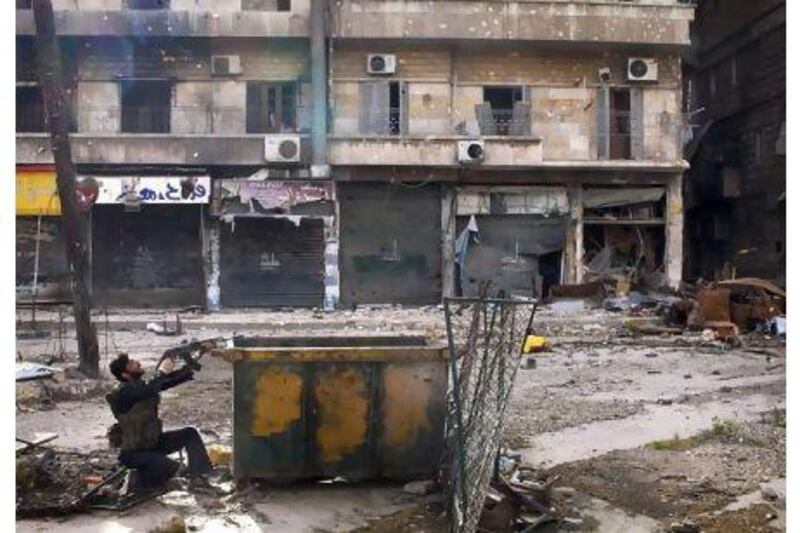Syria's ravaged economy is being kept on life support by an estimated inflow of at least US$500 million (Dh1.83 billion) every month from foreign governments, estimates the Institute of International Finance (IIF).
Support in the form of cash, weapons and other supplies is helping to offset the more than $30bn hit to GDP since the start of the uprising against Bashar Al Assad, the president, in March 2011, said Garbis Iradian, the deputy director of the Africa and Middle East department of the IIF, which represents the world's largest financial institutions.
"The size of the economy is now less than $30bn and that's a huge drop from where it was before the start of the unrest in 2011," he said. "But the wild card is that there's a significant inflow of money coming in to arm the rebels from Qatar and Saudi Arabia, while the Syrian regime is getting money from Iran and probably Russia. Some import bills are not being paid either."
The civil war has claimed the lives of about 70,000 people and led to an exodus of more than one million people from their homeland.
The combination of violence and international sanctions have crippled an economy that used to rely on industry, transportation, oil, tourism and agriculture. The economy will contract by at least 15 per cent this year to $27bn, estimated the IIF in a report released last month.
It follows a 15 per cent dip last year and 6 per cent fall in 2011. The size of the economy stood at $57.5bn before the unrest.
Back then Syria was considered a relative success story among regional economies trying to diversify away from oil revenues.
The country had an expanding manufacturing footprint, annual growth rates of more than 4 per cent and low public debt.
But the seeds of unrest were sown in part by ordinary citizens' unhappiness with their exclusion from the growing prosperity, as well as rising unemployment and corruption in public life.
Life has now become harder still for many Syrians as the conflict has led to power cuts, destruction of homes, business premises and roads, the shedding of an estimated 1.5 million jobs and rampant inflation.
The IIF estimates government debt will balloon to 56.7 per cent of GDP this year and official reserves will dwindle to $2.1bn from $10.8bn in 2011 on the assumption of no major extra support from Russia and Iran.
But inflows of cash from abroad may be helping to stave off a budget crisis. The black market exchange rate is about 100 Syrian pounds per US dollar compared to the official rate of 82 pounds per dollar.
The difference suggests inflows of dollars are coming in from abroad to both the rebels and the regime, said Mr Iradian. "It means they can probably carry on the war for another six months to a year."
However, the more the war drags on, the longer - and more costly - the rebuilding process.
Syria will need about $45bn to fund reconstruction efforts, estimated the Syrian Center for Policy Research in a report published in January for the United Nations Economic and Social Commission for Western Asia.
It also estimated that unemployment could rise to 60 per cent if the conflict continues to 2015.
"If the internal conflict continues for longer, Syria will have to face the already massive burden or the three Rs [relief, reconstruction and reconciliation]" said Zafiris Tzannatos, a UAE-based economist.
"And among them relief and reconstruction may be the easer to address. However, reconciliation will be very difficult amidst fragile internal coalitions and fluid geopolitics."





